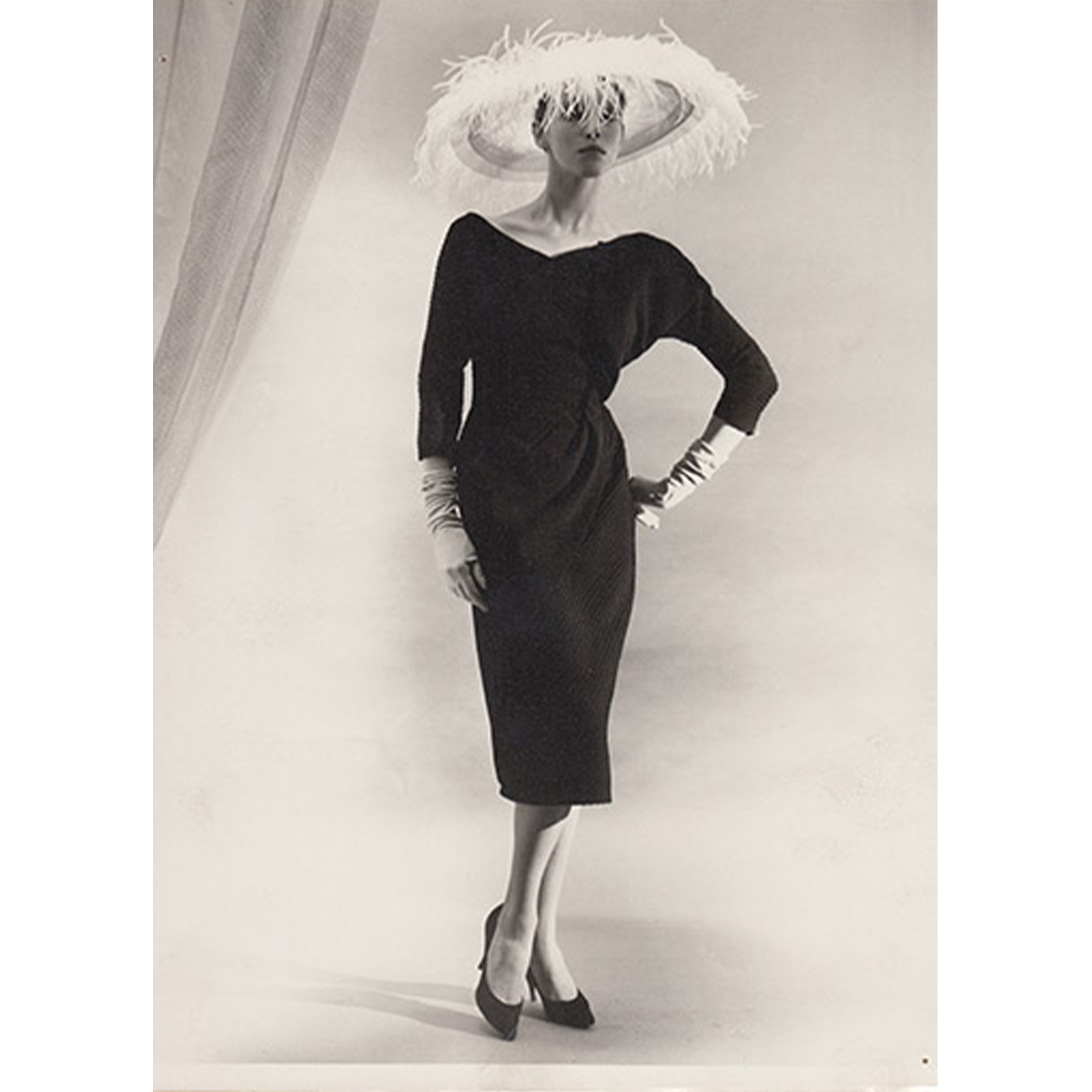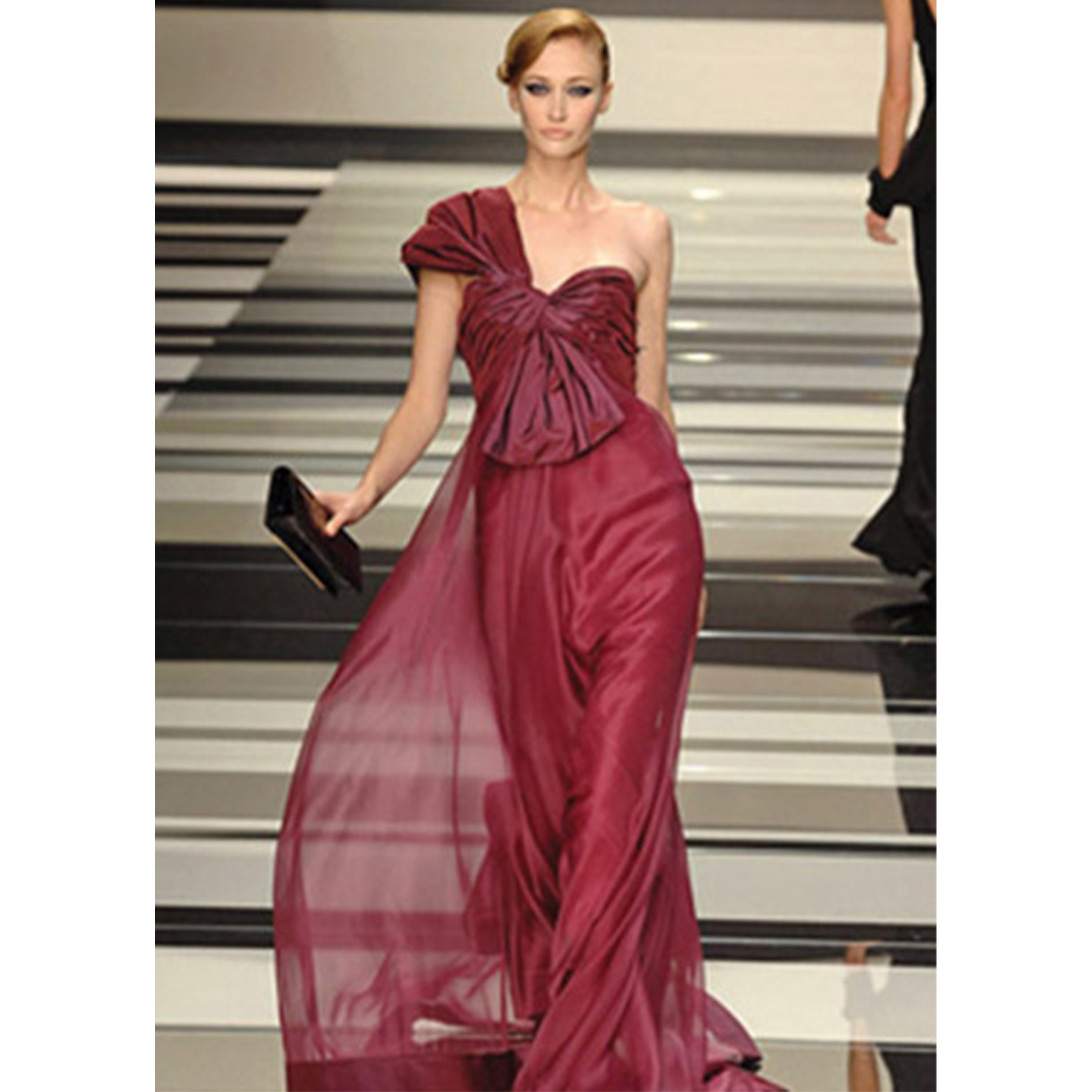1860-90'sThe story of James Hare is one of small beginnings. With nothing but experience and an understanding of the needs of the tailoring trade, James began the business single-handedly distributing cloth bought from small weavers.




1865
James Hare sets up in a cottage on Clare Street, Leeds, purchasing odd fabric lengths and selling to train drivers or guards who in turn sold them to London tailors.
1876
The company moves into a Leeds city centre warehouse as it develops into a bona fide woollen merchants.
1882
The horse and carriage logo is designed. The original version shows the founder, James Hare, travelling to the office every day from his home, accompanied by his wife Mary Ellen and daughters Florrie and Kate.
1892
Arthur and Clifford Hare, the founder's sons, join the business.
1900s“To us this reputation is a very precious thing. We treasure it as we treasure our dignity. For this reputation – this dignity – this family pride – gives our customers full confidence that we shall never sell anything that in quality and sterling worth might be held to be below that high standard set for us”.




1901
James hears that Queen Victoria is seriously ill. In those days, everyone wore black following the death of a monarch, and so he sinks all his savings into black serge. On her death, the company sells 250,000 metres of black cloth. This is a turning point, as a business which was previously limited to the north of England became known throughout the country.
1903
The costume department opened.
1905
Face Cloth was successfully introduced.
1908
James Hare died and the business was taken over by his sons Arthur and Clifford.
1910’sJames Hare becomes a fully operational cloth manufacturing mill and the biggest stockist of Harris Tweed in the world. Know as the “Cloth Headquarters of the British Isles”, it became the largest textile distribution house in Great Britain.




1913
The company launched into the manufacture of woollens and worsteds, starting off with seven looms. At the Leeds headquarters there were twisting and weaving units, dye mills and a finishing department, supplying both the male and female tailoring trades throughout the British Isles.
1914
During the upheaval of the First World War, when the cloth manufacturing and dye trades were in a chaotic condition, Hare’s were the only people who unconditionally guaranteed their dye wares. In the words of Clifford Hare, the founder’s son, “Hare’s dyes are part of the Hare scheme of excellence”.
1920’s
James Hare were the first company to introduce bunches for the tailoring trade made at the company’s headquarters. The firm’s accountants once calculated that the cloth used each year for those bunches would make a carpet two yards wide that would stretch from Leeds to Carlisle!




1921
Arthur Hare was on holiday at a hotel in Southwold. One evening in the bar, he had a conversation with a London banker whose views on the world financial situation were grave. The next morning Arthur headed home and called a conference with his brother, a decision was made to drastically reduce stock with huge price reductions. Two months later the financial crisis came to a head and although James Hare suffered, they fared better than the rest of the trade.
1929
The company was amongst the first to recognise the unique beauty of Harris Tweed. Mr Herbert Morris, the only non-family director, loved the Islands and spent his holidays there. Through his foresight and guidance, Hare’s became the largest stockist of Harris Tweed in the world.
1930’s
The firm’s policy was always to install the latest equipment, in order to improve the service offered to their customers. James Hare Ltd. became the first company in Britain, outside of London, to install a teleprinter and answer machine. They boasted that if a London tailor placed an order at 9am,by 9.10am the material will be on its way to the train station.





1931
The company made its entire fleet of cars available to the election candidates. Its press release announced that “this is the best contribution we can make towards the success of the National Government”.
1932
James William Hare and Clifford Ronald Pitt Hare, grandsons of the founder, join the firm.
1933
James Hare expanded its operations into the manufacture of garments for the tailoring trade, making raincoats, school uniforms, sports jackets and blazers.
1935
2,000,000 yards of fabric is despatched from the warehouse.
1937
A record number of orders is despatched, 1,168 parcels by 12 noon on the Wednesday following Easter.
1939
Queen Mary and the Duchess of Glouchester posed for a photograph on the James Hare stand at White City, London.
1940-50’s
The company issued an uplifting Christmas press release to its customers at the end of the war, announcing “How absurd are these rumours that ‘Britain is finished... a little tired, perhaps... but finished NO! We at James Hare Ltd, are proud to share in speeding Britain’s recovery: in doing so, we maintain and enhance our own tradition of craftsmanship and service.”




1951
The export department established with subsidiaries opening in Canada and Germany.
1960'sJames Hare becomes the first woollen merchant to advertise.





1961
Hare’s was the first woollen merchant to advertise, earning themselves the nickname “The Quality People”. A press office was opened in Fleet Street, London, with a staff of artists, designers, writers and photographers.
1964
James Hare, the founder's great grandson joined the firm eventually becoming Chairman.
1980'sThe 1980’s is a huge period of change. The woollen merchant & manufacturing firm is sold, along with the brand “Hare of England”. It establishes itself as a silk merchant becoming the leading supplier of the bridal and fashion trade.


1984
Tim Hare, the founder's great grandson joined the firm becoming Managing Director.
1984
The international name of “Hare of England” is sold, and then reopens as a silk distributor for the fashion trade. It is the first company to offer no minimums to small designers, thereby bypassing fabric retail shops. It became the leading importer of silk dupion, just at the time when the puff ball trend takes off.
1989
James Hare sells its millionth metre of silk.
1990'sThe vast colour ranges of silk chiffon, satin, dupion, organza, lace and many other qualities, ensured that James Hare fabrics became a regular feature on catwalks. The policy of no minimum order and cuts to the nearest 10 cms ensure that their service was second to nonE.


1995
Stocks the largest colour range of silk dupion in Europe.
1999
Moves into the Interior Design business supplying silks for the furnishing trade.
2000'sThe 2000’s saw a growth in the interiors market, developing the plain silks range to over 600 shades, offering the first upholstery collection and expanding to offer bespoke wallcoverings.





2000
Charlie and Saffron Hare, the founder’s great-great-grandchildren, join the firm.
2002
The interior plain silk range is increased to over 600 shades.
2004
A range of cushions and throws is introduced.
2005
Exports to over 34 countries worldwide.
2008
First upholstery collection is introduced.
2009
Silk wallcovering service is opened. Virtually all the wonderful silks can be paper backed to order.
2010'sJames Hare is Britain’s leading fabric specialist. It is still owned and run by the Hare family, producing luxury textiles for the demanding world of fashion and interiors. Firm favourites with leading designers and decorators, James Hare luxurious fabrics are famous world wide.





2010
Distribution in the Far East is established including China, Australia, Indonesia, Malaysia and New Zealand.
2011
Two showrooms in Bejing are opened.
2012
London showroom for fashion fabrics is opened.
2014
Representation in Germany and the United States is established.
2015
James Hare celebrates its 150th anniversary and was honoured with a visit from Anne Princess Royal. HRH was shown around the warehouse, design and pattern department and unveiled a celebratory plaque. The company marked its remarkable history with two distinctive interior collections, Evolution and Richmond, which fuse heritage inspirations with contemporary style.
TodayThe business has progressed over generations but it continues to abide by its founder’s principals of bringing the customer only the best of British design, quality and service.












2018/2019
Charlie Hare becomes Export Director and Saffron Hare becomes Creative Director. The company introduces its first Trevira range to move into the hotel contract market. A new trim collection is also introduced to enhance the huge plain fabrics range.
2020
Introducing two contract collections Highbury and Mayfair. Both collections pass all the main FR standards and offer great acoustic properties and a beautiful colour palette.
Collaboration with Bella Figura Lighting introducing our silks, linens and velvets in various beautiful colours for their handmade lampshades.
2021
During the turbulent times of the COVID pandemic and Brexit, James Hare continued to expand and innovate by introducing a passementerie collection of trims, braids drops and fringes for the first time.
2022
Represented in the USA by Scalamandré. Introduces a wallcovering source book confirming the company's status as the largest silk wallcovering supplier in the world.
2023
Launched a Readymade Cushion collection, designed and handmade in England from the latest fabric collections. Saffron Hare becomes Managing Director, the first female head of the business.
2024
James Hare fabrics have been prominently featured in the hit series The Marvelous Mrs. Maisel, with our luxurious textiles playing a key role in bringing the stunning costumes to life.













 Menu
Menu






